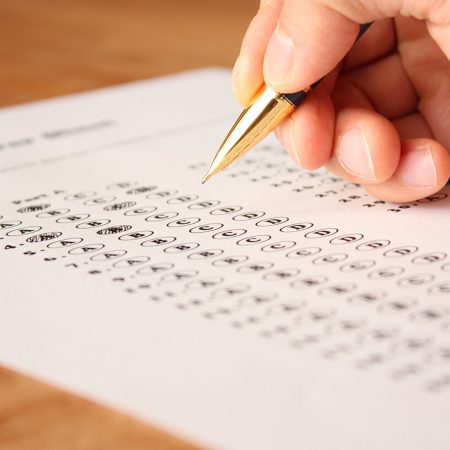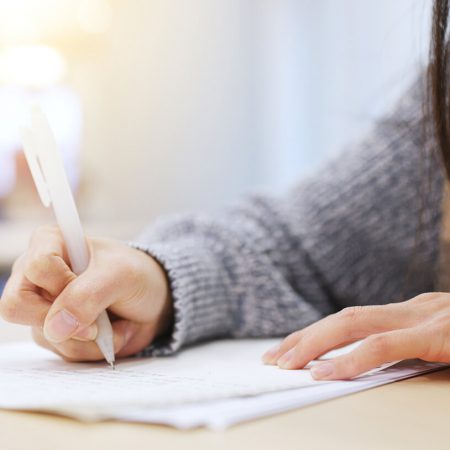How did I study Japanese? Part 2 of 5

Previously, I gave you a closer look into my process of learning how to read Japanese. This time, I’ll be giving you a little introduction to the basics of proper Japanese pronunciation!
The prospect of learning how to pronounce foreign words of an entirely new language is understandably intimidating for any first-time student. Even I had thoughts like, “How do I say that?” and “How did they even make that sound with their mouth?” If these feelings apply to you, I can empathize with that respect. However, I can assure you that you will gradually dispel those fears after you take the first step!
Table of contents
How I Studied Japanese: Part 2 of 5 – Basic Pronunciation

Believe me when I say that learning basic Japanese pronunciation is much easier than learning English. Think of the English verb “lead” and the noun “bread.” Or how the homograph “bass” could be pronounced like /bas/ to mean the type of fish or /bās/ to mean the deep-toned sound. These have a similar letter structure but are pronounced differently.
You won’t have this problem with the Japanese. This language’s writing systems are phonetic syllabaries, meaning every symbol represents a single sound and syllable. Basically, if you can spell it, you can say it!
When I was studying Japanese, my instructor was very lenient when it came to pronunciation. But since I enjoyed learning the language, I put in extra effort to learn proper Japanese pronunciation. If you want to improve your Japanese proficiency, be sure to work on saying the words correctly as well!
In my case, instead of aiming to sound like a native speaker, my goal was to pronounce Japanese words clear enough for native speakers to understand. I preferred to sound like myself over exaggerating my accent to sound like a Japanese celebrity or anime character. This took some discipline in mastering the basics and gradually moving onto listening exercises. Allow me to walk you through my methods:
I mastered hiragana

As I’ve mentioned in the 1st part of this series of articles, hiragana literally means “plain kana,” meaning it’s the most common and core Japanese writing system. Katakana characters basically represent the same sounds while kanji represent specific words, but are both used for different occasions. As such, I will be focusing on hiragana in this article to highlight the basics of learning how to pronounce Japanese.
Pronouncing Japanese words seemed much more straightforward once I understood that the language is made up of phonetic syllables. If I could read a word in hiragana, knowing which sounds each character represented, then I’d pretty much know how to pronounce it. I even surprised myself when I discovered that I could spell out the Japanese words from anime theme songs I’ve memorized as a kid. That was really helpful in mastering hiragana!
For your convenience, here is the hiragana chart I devised for my personal studies:
Hiragana*
| A | I | U | E | O | |
|---|---|---|---|---|---|
| – | あ | い | う | え | お |
| K | か | き | く | け | こ |
| S | さ | し | す | せ | そ |
| T | た | ち | つ | て | と |
| N | な | に | ぬ | ね | の |
| H | は | ひ | ふ | へ | ほ |
| M | ま | み | む | め | も |
| Y | や | – | ゆ | – | よ |
| R | ら | り | る | れ | ろ |
| W | わ | – | – | – | を |
| n | ん | ||||
I noticed that Japanese syllables are pretty much consonants that end openly with a vowel sound. The only exception is ん, which could represent an “n, m, or ŋ” sound depending on the context. Examples are よん (EN: four) pronounced like /yon/; せんぱい (EN: superior; upperclassman) pronounced like /sem-pai/; and でんき (EN: electricity) pronounced like /deŋ-ki/.
It’s also important to note that the English pronunciations of Japanese characters are only approximate adaptations. Take ふ for example. This symbol is in the H-row so you would think it’s pronounced /hu/, but it actually sounds closer to /fu/. The same applies to the R-line, where the symbols represent consonant sounds that are in-between “L” and “R.”
Some hiragana characters also have variations that represent different sounds. Producing these alternate sounds required similar mouth shapes to their original symbols. So, it made sense to me for those characters to have such variations, and I accepted them as they were. Try to observe the way your mouth moves when you say “ka” and “ga” or “ta” and “da” out loud. See (or hear) what I mean?
The identifiers for these variations are called dakuten (濁点) and handakuten (半濁点). Dakuten are written as 2 small lines that look like opening quotation marks above characters in the K, S, T, and H-rows. Adding these lines will make the characters represent G, Z, D, and B sounds, respectively. Handakuten is a small circle above the H-row characters and creates P sounds.
Personally, the first character that really stuck with me was the katakana symbol ポ, which represents the “po” sound. It’s the same character used to spell “Pokémon” in Japanese which is spelled「ポケモン」. So, I imagined these variations as evolving an original hiragana character, and this strategy helped me remember them better.
Here is a chart for the basic hiragana variations with dakuten and handakuten:
Hiragana sound variations
| A | I | U | E | O | |
|---|---|---|---|---|---|
| G | が | ぎ | ぐ | げ | ご |
| Z | ざ | じ | ず | ぜ | ぞ |
| D | だ | ぢ | づ | で | ど |
| B | ば | び | ぶ | べ | ぼ |
| P | ぱ | ぴ | ぷ | ぺ | ぽ |
Similarly, Y-row characters can be combined with symbols under the I-column to produce other sounds, as shown in the following chart:
Hiragana Y-line combinations
| YA | YU | YO | |
|---|---|---|---|
| K | きゃ | きゅ | きょ |
| G | ぎゃ | ぎゅ | ぎょ |
| S | しゃ | しゅ | しょ |
| Z | じゃ | じゅ | じょ |
| T | ちゃ | ちゅ | ちょ |
| D | ぢゃ | ぢゅ | ぢょ |
| N | にゃ | にゅ | にょ |
| H | ひゃ | ひゅ | ひょ |
| B | びゃ | びゅ | びょ |
| P | ぴゃ | ぴゅ | ぴょ |
| M | みゃ | みゅ | みょ |
| R | りゃ | りゅ | りょ |
Honestly, I was a bit confused with the Z-line and D-line in these combinations since they produced similar “J” sounds. じゃand ぢゃare both pronounced /ja/, so these two were difficult to discern from each other. However, my adviser simply explained that the Y-line combinations with Z-line characters are more commonly used compared to D-line characters, which might be used in manga.
You might usually hear じゃあね (EN: bye) and じゃく (EN: small amount) which are pronounced like /jā-ne/ and /ja-ku/ respectively. So if you hear Japanese words pronounced with a “J” sound, chances are they’re spelled using the Z-line.
Also, notice how the Y-row characters are smaller compared to their original size? You might also have seen a small っ(tsu) in some Japanese words like まって (EN: wait) /mat-te/. This little っis called the sokuon (促音), which indicates that the following consonant sound is doubled. This little character can entirely change the meaning of a word, so be sure to pronounce it well!
I shadowed and mimicked native resources

Most beginners learn Japanese because of Japanese media. If you like watching anime and enjoy listening to Japanese music, learning how to pronounce Japanese words will be much easier! You’ll have an even better experience if you’re into live-action drama series where you can observe actors’ mouth movements when saying words.
I mentioned that transcribing Japanese song lyrics helped me master hiragana. Seeing how the words looked in my handwriting made it much simpler to practice what sound each symbol represented. Try listening to the lines in anime and Japanese drama series and then spell them out. This way, you get to see what the characters have said, and you can practice delivering the lines as they have!
One thing I distinctly noticed when watching series is how「です」is pronounced /des/ instead of /de-su/. I supposed that there were instances where I can drop the vowel sound in certain syllables. True enough, my instructor explained that す, ち, and し can be devoiced as in words すき (EN: like) /ski/, しち (EN: seven) /shi-ch/, and わかりました (EN: understood) /wa-ka-ri-mash-ta/.
Mimicking how Japanese people say Japanese words is the fastest way to learn proper pronunciation. It’s even better if you’re friends with a native Japanese speaker so you can really hear the intonation and pronunciation. Still, there are countless online resources from Japanese TED Talks to radio dramas just waiting to be discovered!
I used my phone’s voice recorder

Copying native Japanese speakers in anime and drama shows proved helpful in learning how to pronounce familiar Japanese words. So, I took my practice even further and put my phone’s voice recorder to good use. This was the first time I used my voice recorder for anything, and hearing myself pronouncing Japanese words helped me improve.
I couldn’t sing to save my life, so I practiced delivering lines from Japanese movies. I listened carefully to the dialogue, transcribed them just to have a guide, and then recorded myself saying lines just as they did. Having a copy of myself speaking in Japanese made it easier to compare to how the actors said it in the movies. I took note of where I sounded wonky and adjusted accordingly.
Apart from recording yourself speak Japanese, you could also pay attention to the actors’ lip movement and practice producing the same sounds in front of a mirror. You could keep track of your progress with your recordings. And with this mirror trick, you can see the differences for yourself and mimic mouth formations much efficiently. Try out this exercise, and I guarantee you’ll hear the results!
Conclusion
It goes to show how mastering the basic Japanese writing system helps you proceed with Japanese studies. Once you know how to spell out the words you hear, you’ll have a better idea of what Japanese words look like on print, which will later prove to help you learn how to read them out loud.
There are many Japanese media resources to help you learn how to pronounce Japanese correctly. Still, imitating native Japanese speakers is the best way to learn proper Japanese pronunciation. Rest assured that learning how to say Japanese words properly is rewarding. You’ll be able to state what you mean clearly, and you’ll communicate well enough with native speakers. Good luck!
Motto Japan, the community platform to support foreigners with the foundation for life in Japan, including Japanese study, job opportunities, and housing service. Motto Japan Media will provide a wide variety of information for Japanese fans all over the world, to create a cross-cultural environment and enrich the life of foreign residents in Japan!













Leave a Reply